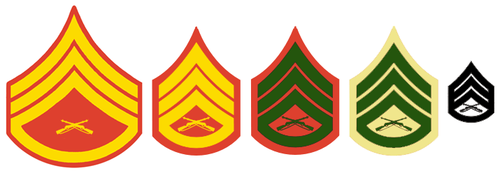This article has multiple issues. Please help improve it or discuss these issues on the talk page . (Learn how and when to remove these messages)
|

United States Marine Corps rank insignia are the devices worn by officers in the United States Marine Corps, in order to provide distinction from other ranks. Different styles of rank insignia are worn on different uniforms of the United States Marine Corps.
Contents
- Commissioned officers
- Warrant officers
- Timeline of warrant officer rank changes
- Enlisted
- Timeline of enlisted rank changes
- See also
- Citations
- General sources
- External links
Commissioned officers, which are distinguished from other officers by their commission , or formal written authority, have ranks that are subdivided into general officers, field-grade officers, and company-grade officers. Warrant officers provide leadership and training in specialized fields and skills. Enlisted Marines with paygrades of E-4 and E-5 are non-commissioned officers (NCOs) while those at E-6 and higher are staff noncommissioned officers (SNCOs). The E-8 and E-9 levels each have two ranks per pay grade, each with different responsibilities. Gunnery sergeants (E-7) indicate on their annual evaluations (called "fitness reports") their preferred promotional track: master sergeant or first sergeant.




















































